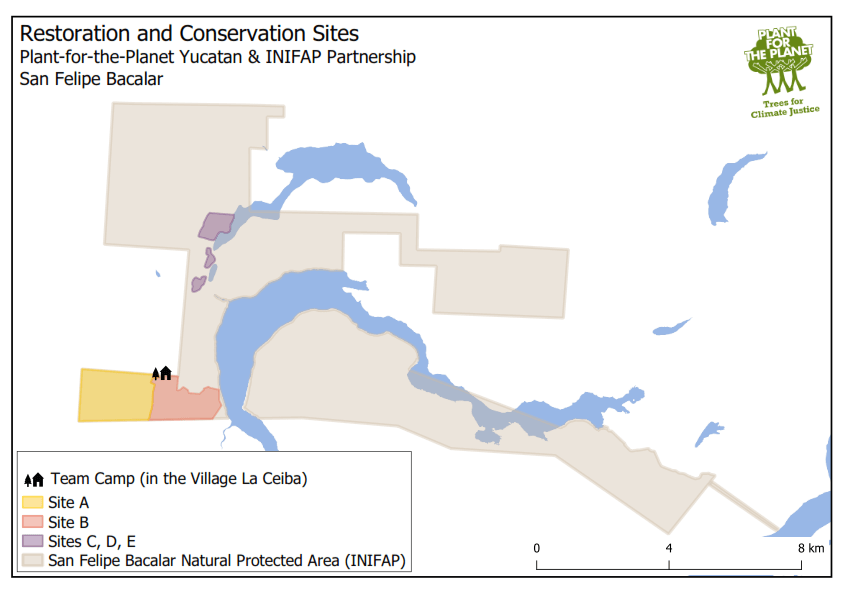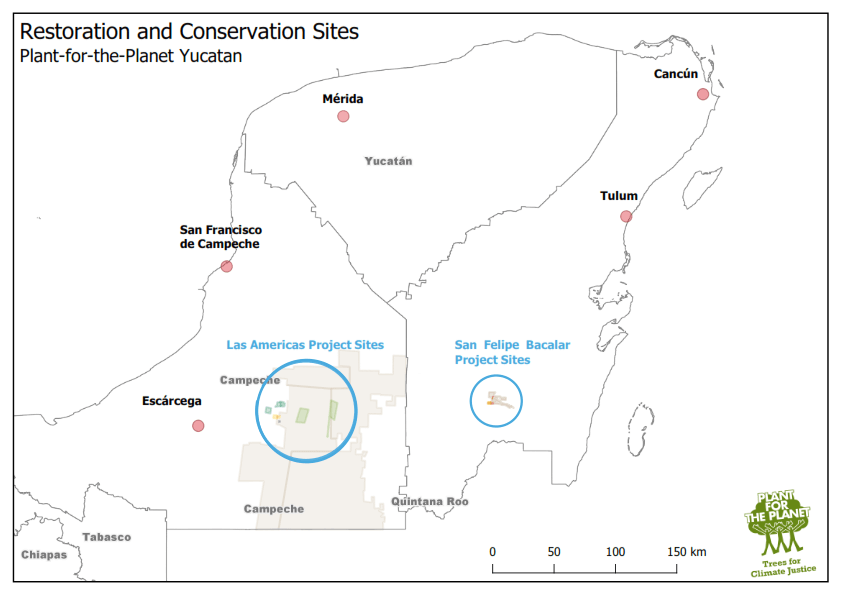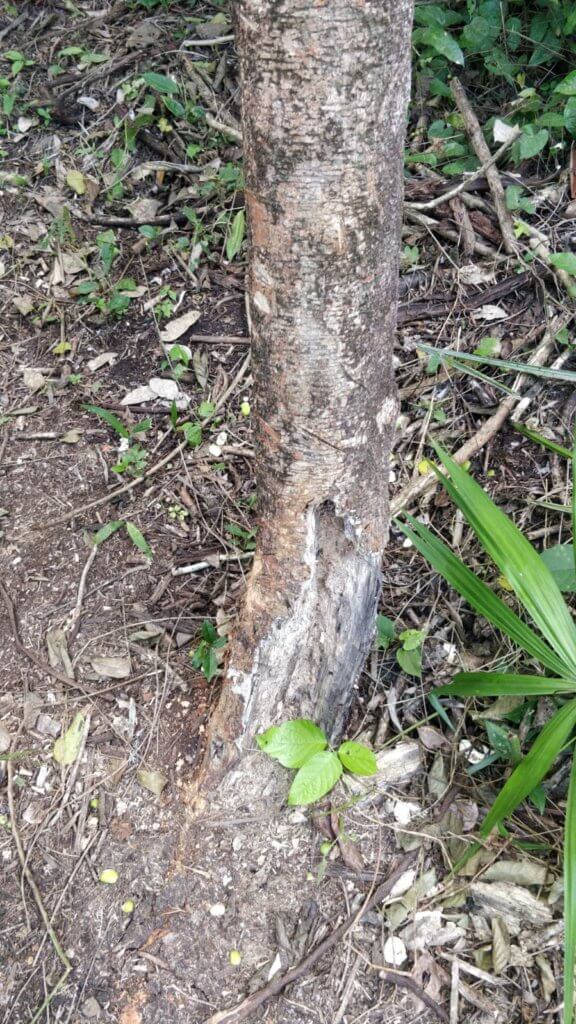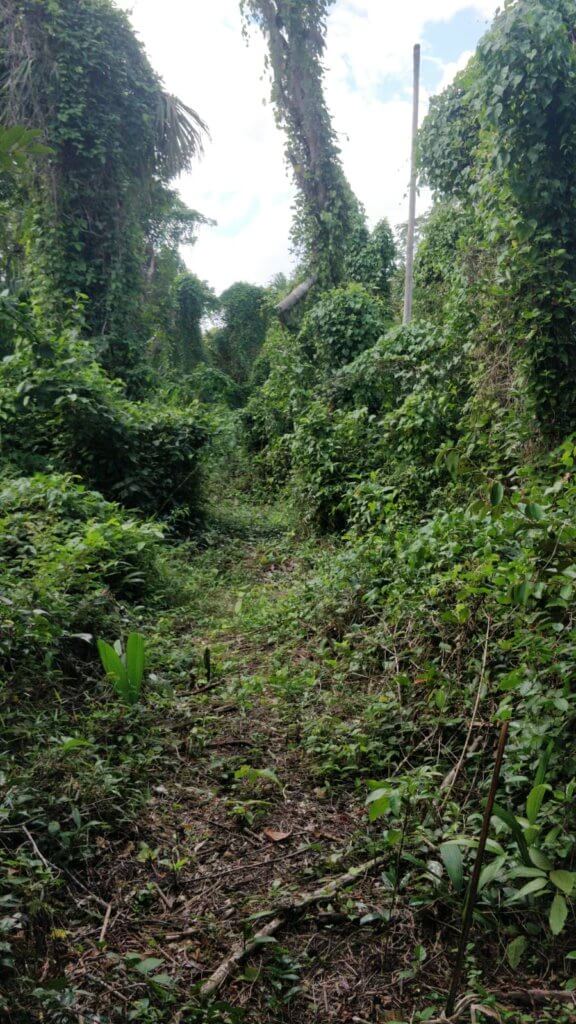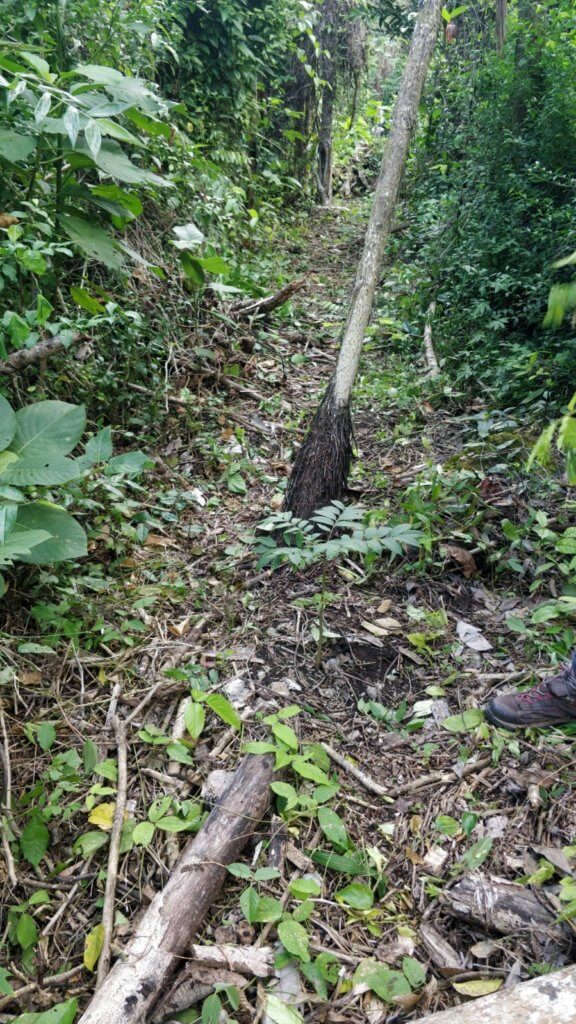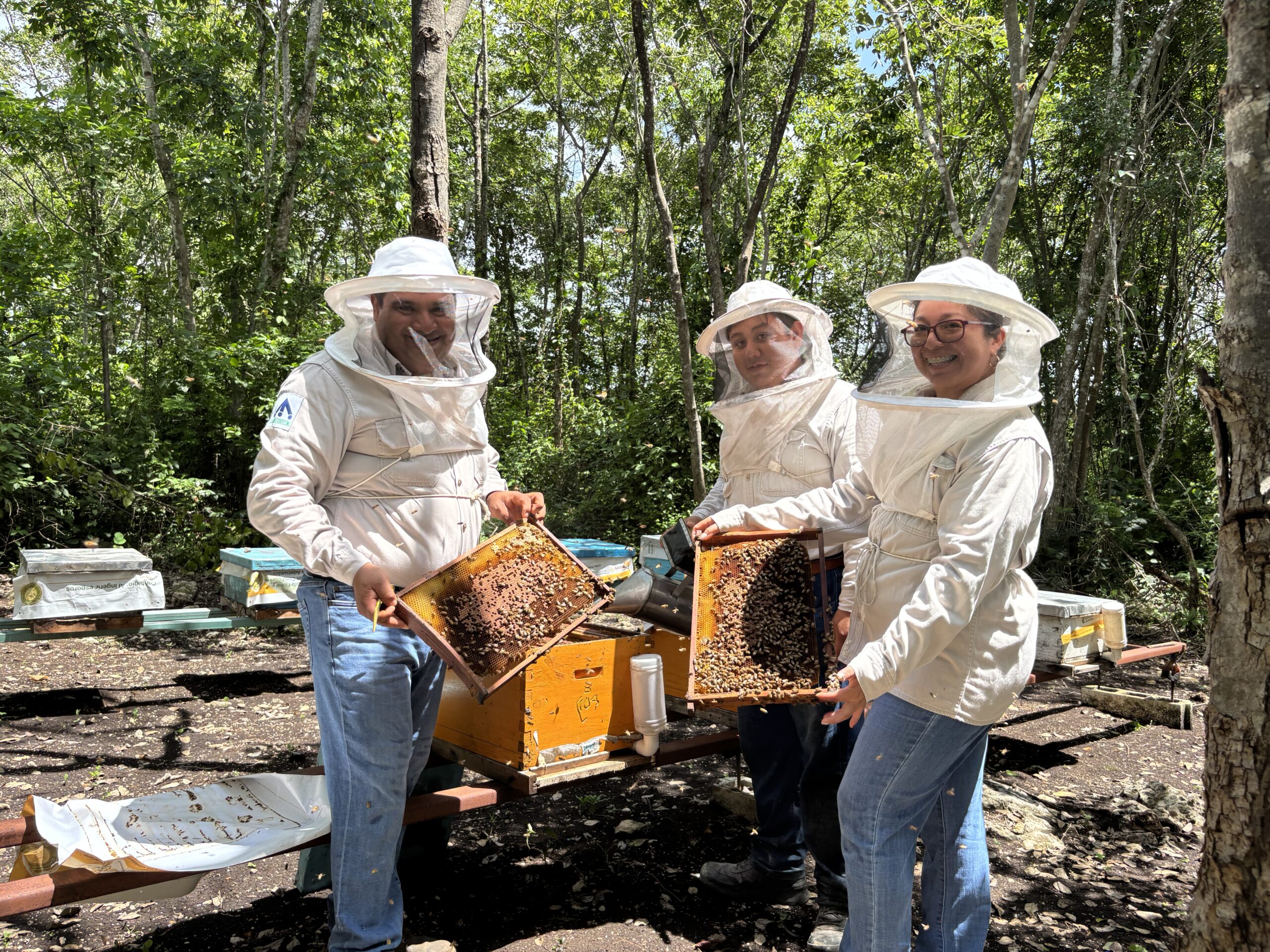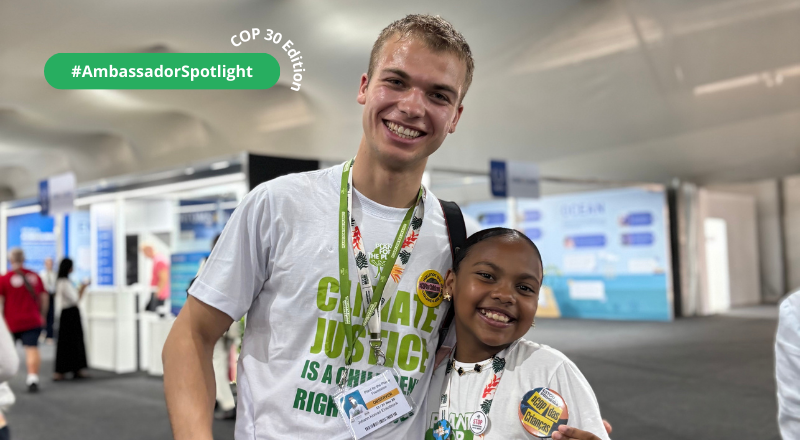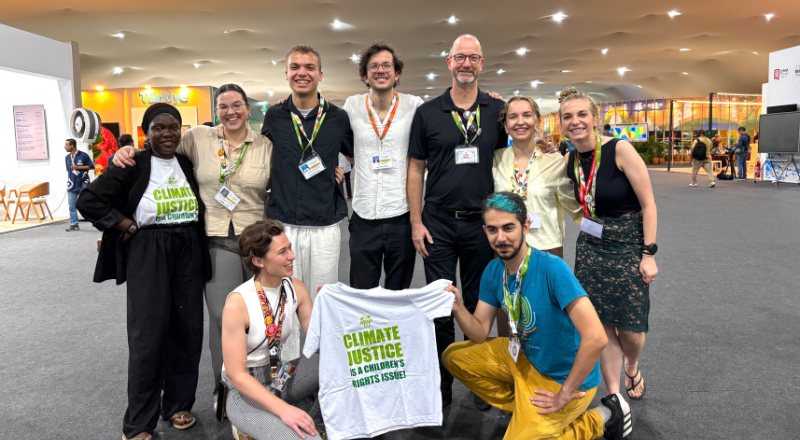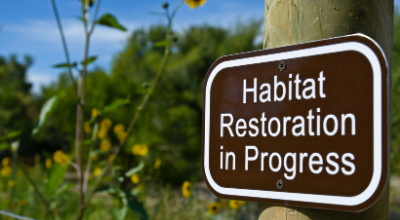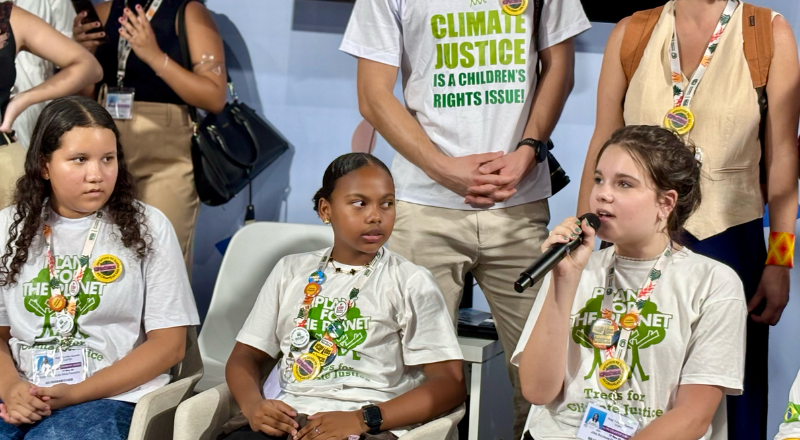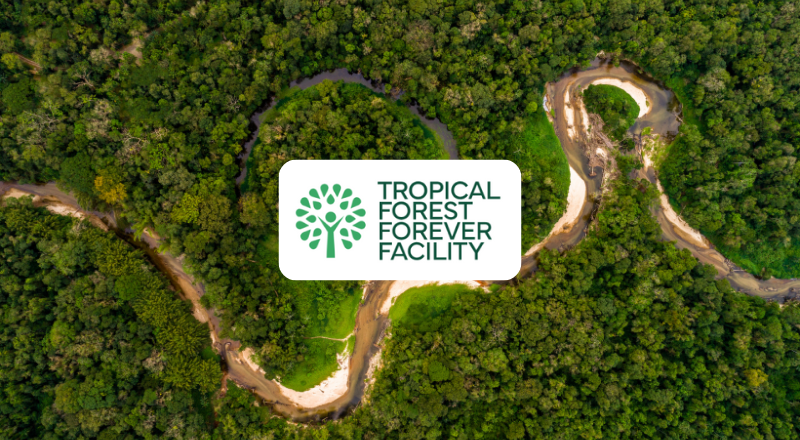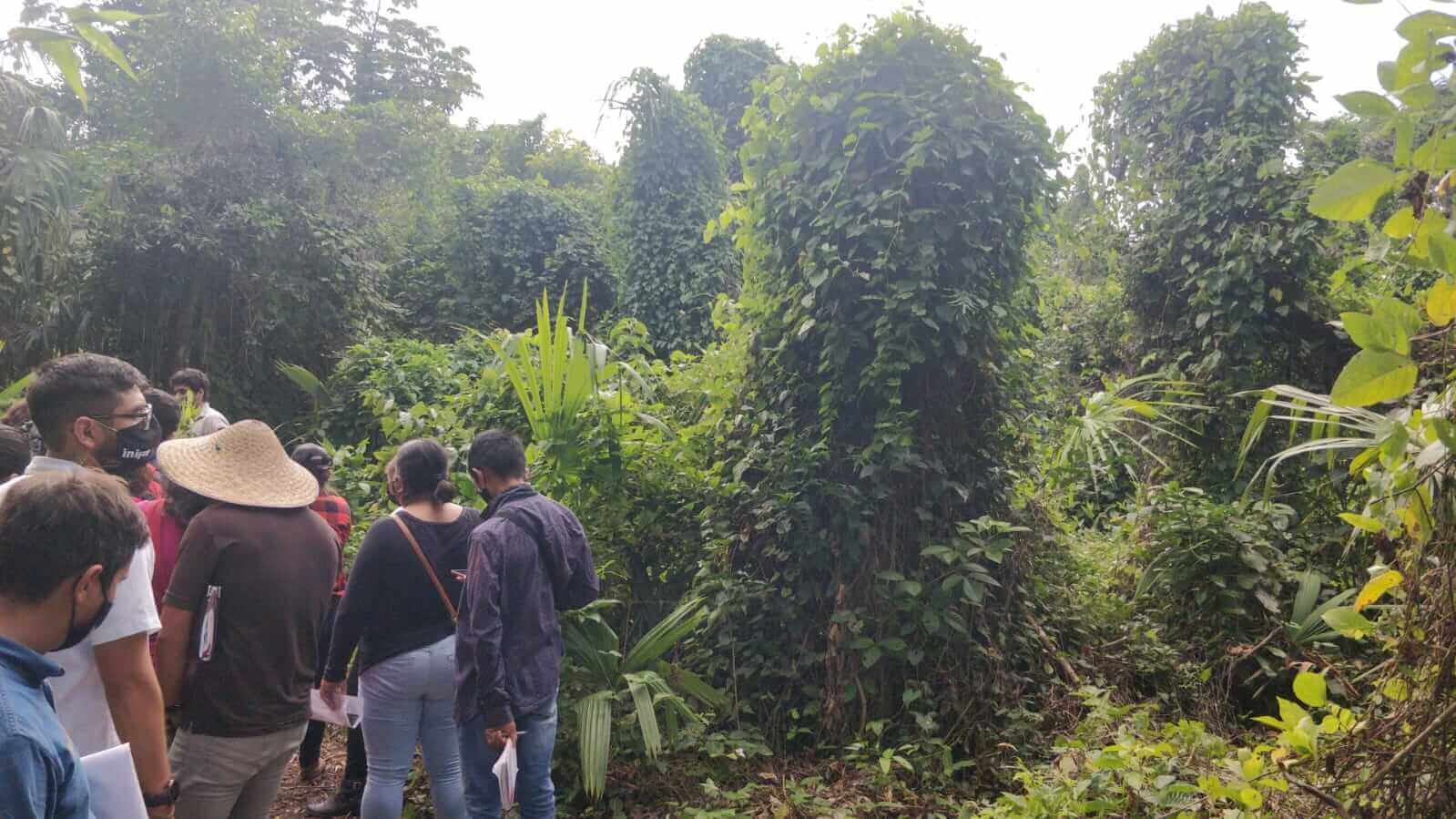
2021 was special and different for Plant-for-the-Planet in many ways. This applies in an outstanding way to the restoration of degraded forests on the Yucatán Peninsula in Mexico. This year, for the first time, the ecology experts of the Foundation’s restoration project began a collaboration with a government research institution to restore a forest area that had been significantly impacted by a fire in 2020.
In August, Centro de Investigación Regional Sureste (CIRSE) of the Instituto Nacional de Investigaciones Forestales, Agrícolas y Pecuarias(INIFAP) and Plant-for-the-Planet signed an agreement to collaborate on the restoration of 45 hectares of forest in the San Felipe de Bacalar Nature Reserve. The protected area, located about 100 km east of the Foundation’s planting area, is part of a project area of about 3,500 hectares with a high ecological diversity that includes more than 60 native forest plants.
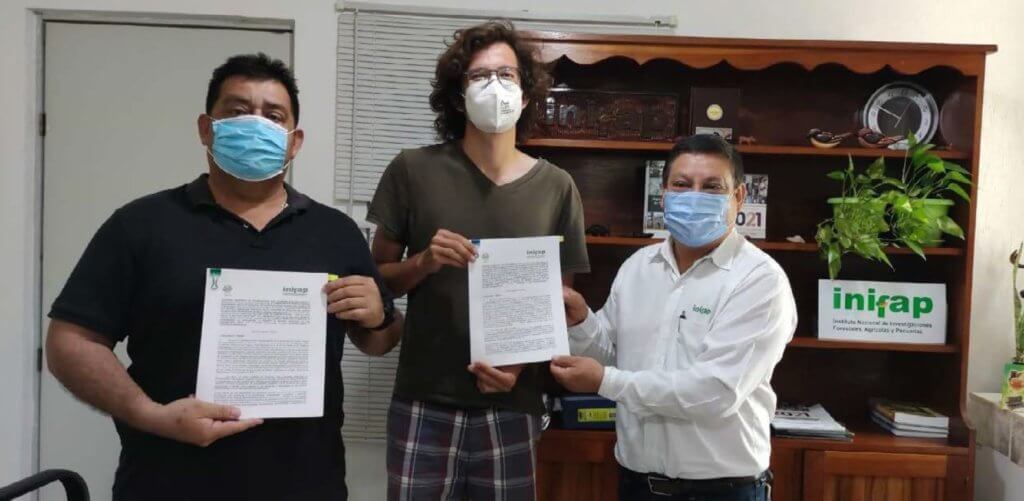
From left to right: Ing. Raúl Negrete, president of Plant-for-the-Planet A.C, Felix Finkbeiner, board member of Plant-for-the-Planet, and M. C. Bartolo Rodríguez Santiago, regional director of CIRSE INIFAP with the signed agreement for the implementation of the restoration project in San Felipe Bacalar in August this year. (Photo: INIFAP)
The reason for the cooperation request with Plant-for-the-Planet was a forest fire in 2020 that had left profound damage in the protected area and required assisted restoration intervention in the form of planting specific tree species that were significantly impacted. Additional areas are scheduled to be restored in 2022. These are the areas marked C, D and E in the graphic below, which had been temporarily used as coconut plantations and are slated to be converted back into a native forest starting this year.
The scientific team of Plant-for-the-Planet created a restoration concept for this task with the target to first supplement tree species that are particularly important for the ecosystem on the fire-damaged areas A and B by enrichment planting.
Numerous trees had survived the fire in this forest area. But the picture that emerged a year after the fire made it clear that many specific native hardwood species experienced widespread mortality. Only specific robust tree species that withstand fires well have managed to recover.
Specific species were significantly impacted, which is why it was important to bring back the original ecological diversity here as quickly as possible. In this way the ecosystem as a whole can be preserved and the resiliency restored, strengthening the forest as a whole.
A total of 310,964 tree seedlings were planted in the 2021 planting season. Training by Plant-for-the-Planet also ensured that wide firebreaks were created to better defend against fires in the future.
Another very important aspect was that Plant-for-the-Planet, thanks to its own seed program, was able to supply the seedlings of the specific native tree species not typically produced by nurseries that were required for San Felipe de Bacalar. These species were grown in Plant-for-the-Planet’s partner tree nursery, and also used for the restoration of the foundation’s own nearby planting area. The ecologists collect these seeds from carefully selected mother trees in nearby forests.
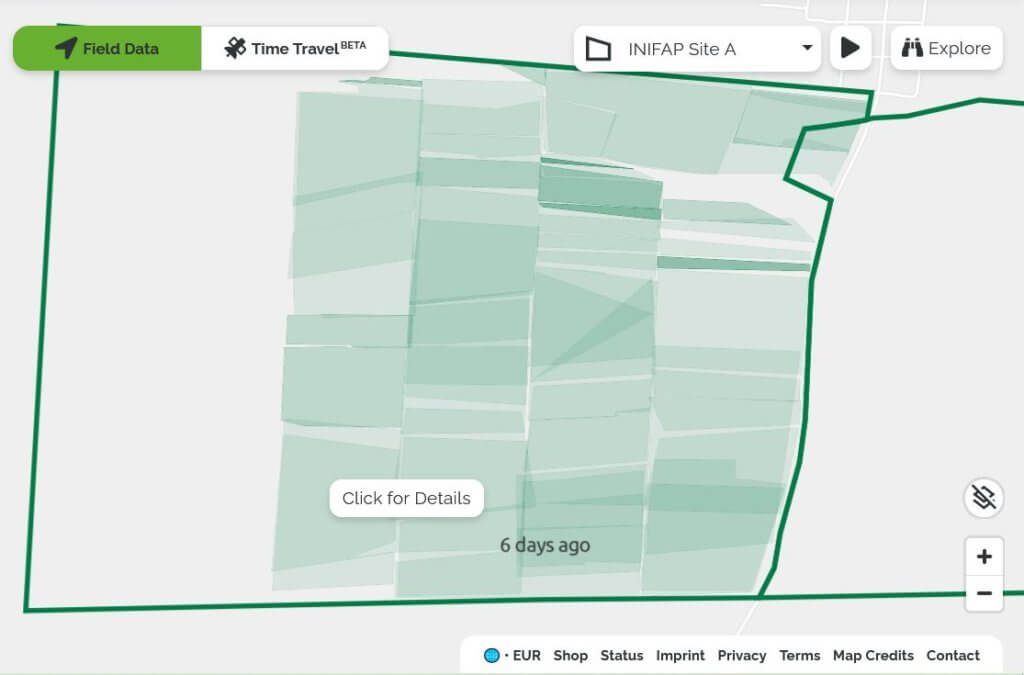
Screenshot of the INIFAP planting area A on the Plant-for-the-Planet.org donation platform..
Every day, each newly planted area was logged and documented using the TreeMapper.app developed by Plant-for-the-Planet. Individual trees of all planted species have been selected for each planting day, measured and uploaded to the platform with a photo. These trees are monitored over the long term and always re-measured to document their development and thus verify the restoration success. This technology is easy to implement for the planters using their mobile phones and creates maximum transparency. Initial data suggests that ~80% of trees planted survived through November 2021, a very high survival rate for this system.
INIFAP, which will be active in this cooperation as a technical supporter and in the monitoring and validation of the activities, reported in detail on the newly concluded cooperation agreement in the August issue of its journal, highlighting the special qualifications of Plant-for-the-Planet for the agreed cooperation:
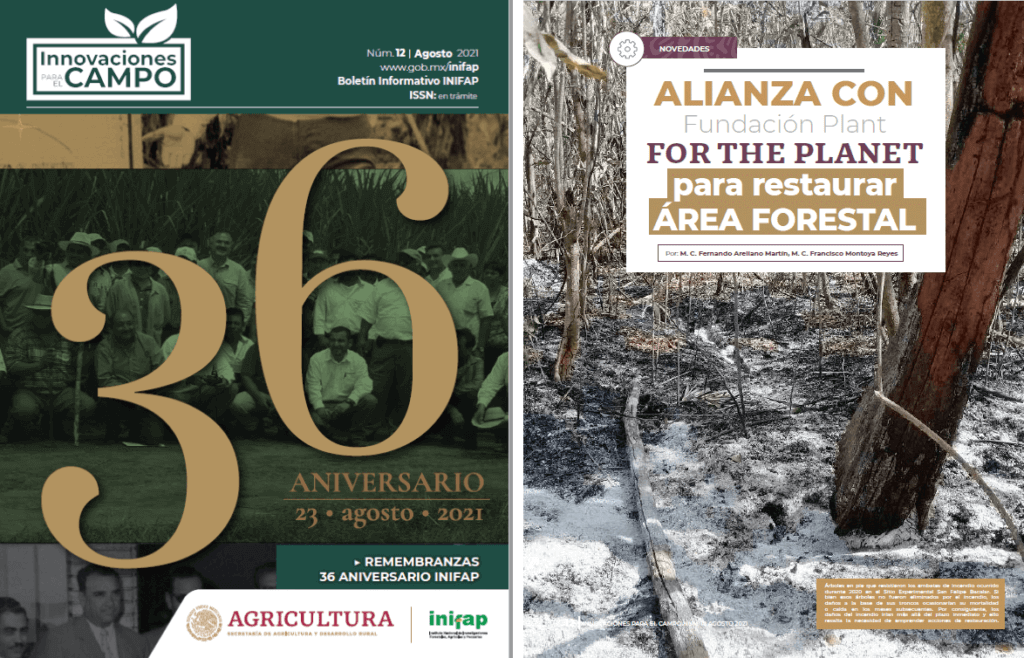
“Plant-for-the-Planet (…) has its own technical and management structure that allows it to carry out renaturation activities independently, this includes seed collection, growing tree seedlings in the nursery, preparing damaged areas for restoration work, identifying enrichment gaps, implementing plantings and maintaining them, and hiring and supervising the personnel needed for the different activities.”
(Source: Boletín Informativo INIFAP, INNOVACIONES PARA EL CAMPO NÚM. 12 AGOSTO 2021, www.gob.mx/inifap)
An added benefit from the collaboration between the restoration specialists at Plant-for-the-Planet and INIFAP is the transfer of knowledge between the two institutions, as well as the acquisition of new scientific knowledge that will ultimately benefit restoration initiatives worldwide by improving methodology and monitoring, with free access to tools and techniques.
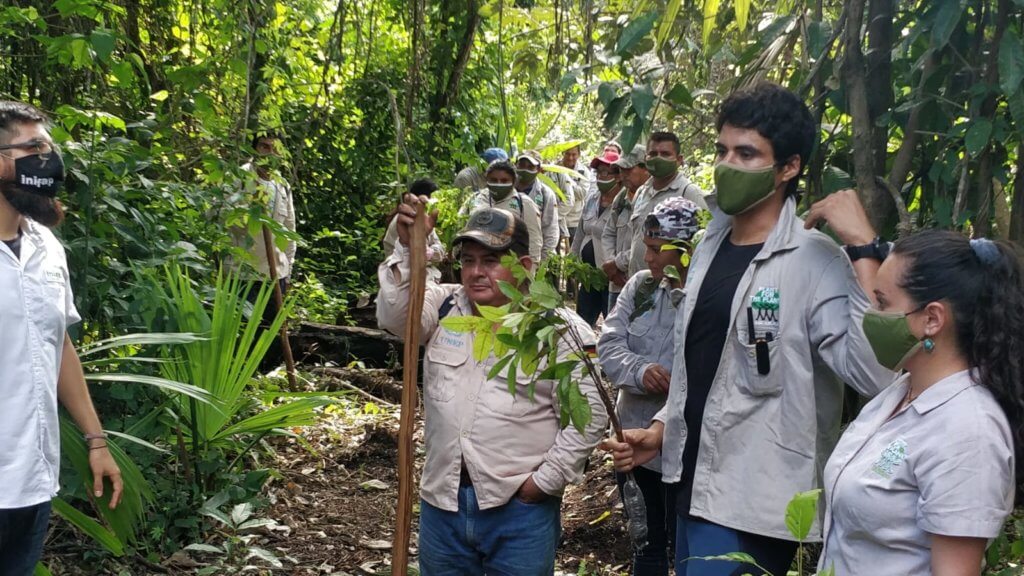
In the following video (You can turn on English subtitles) Felix Finkbeiner shows the three planting areas that we were able to start restoring in Mexico.
In the future, these restored forests will help improve the local climate by strengthening the natural water cycle, providing new homes for endangered species such as puma, jaguar and tapir, and acting as natural CO2 sinks in the fight against the climate crisis.
Info INIFAP (Information taken from the article quoted above):
INIFAP operates five experimental sites in Yucatán, in the states of Yucatán (Uxmal and Tizimín), Campeche (Chiná and El Tormento), and Quintana Roo state (San Felipe de Bacalar). The regional office is located in Mérida, Yucatán.
INIFAP, among other things, aims to increase carbon stocks in forests, which can be achieved by taking action to restore degraded forest areas. One of the main causes of forest degradation in the dry tropics is human started forest fires, which, if left uncontrolled, cause severe damage to local flora and fauna, soil degredation, increased erosion, increased CO2 emissions to the atmosphere, and occasionally loss of life.
